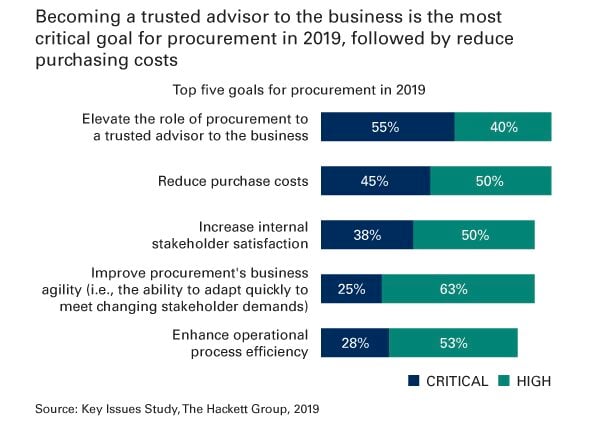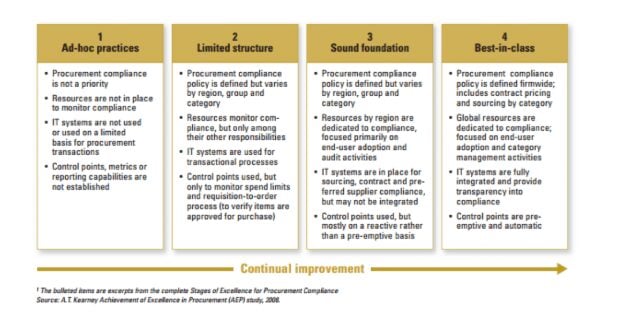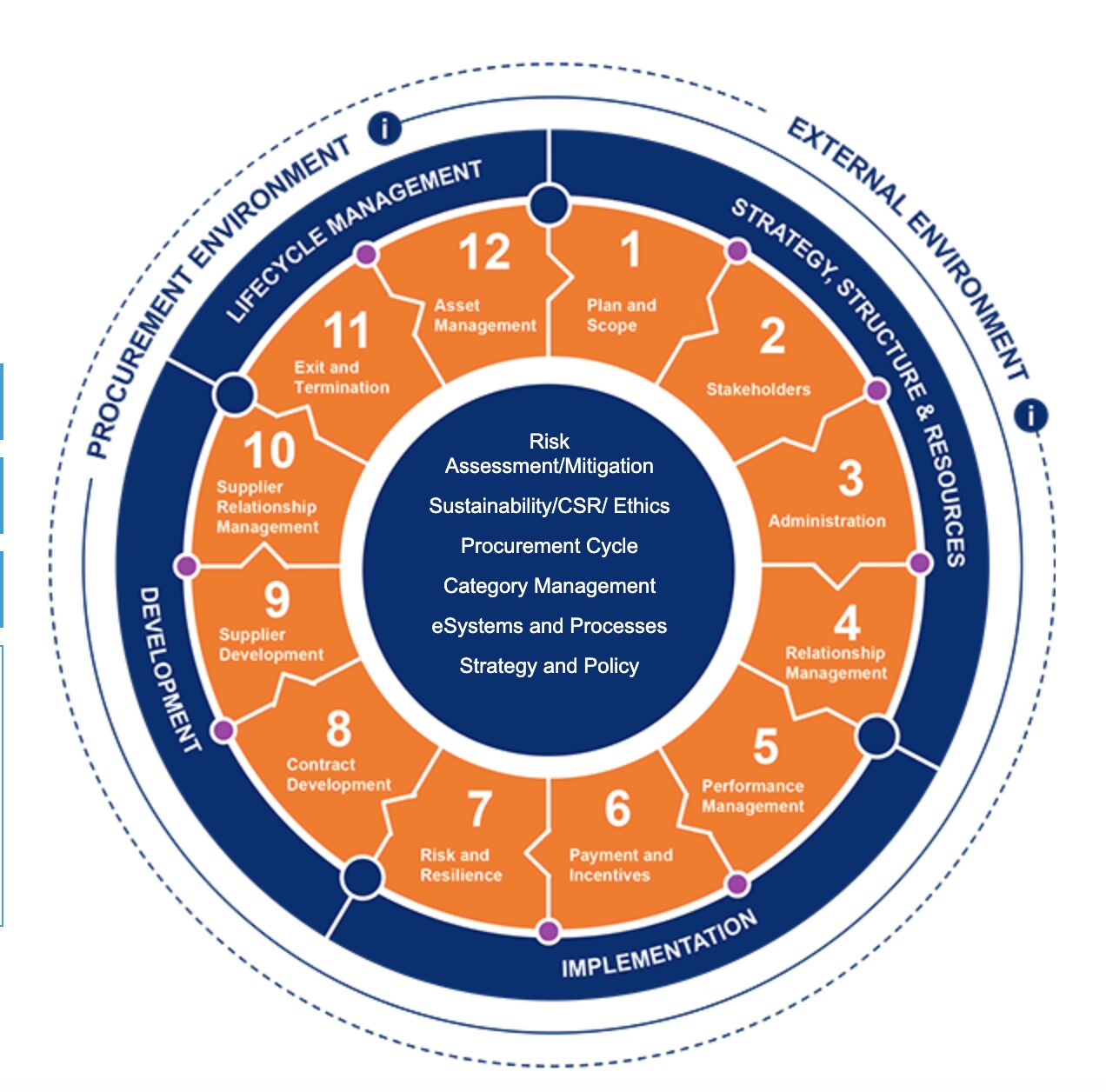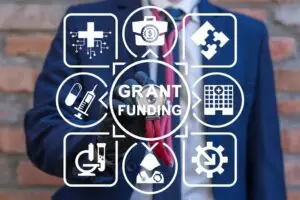Procurement compliance involves adhering to protocols for the share of company spend that procurement is supposed to control—in other words, it’s the percentage of purchasing that is contracted and approved based on an established set of guidelines.
Compliance is an essential part of any company’s risk management strategy. It ensures that suppliers, buyers, and employees stick to the terms laid out in their contracts, protecting your organization from fraud, corruption, and rogue spending.
[content_upgrade cu_id=”4715″]Free Download: 6 Factors that Undermine Compliance[content_upgrade_button]Click Here[/content_upgrade_button][/content_upgrade]
Why Procurement Compliance Matters
According to a survey from The Hackett Group, the most critical goal for procurement pros going into 2019 was becoming a trusted advisor for their business. As you can see in the diagram below, other goals included improved business agility, increased efficiency, and cost savings.

Contract compliance plays a major role in helping organizations meet each of the goals outlined in the Hackett report. Procurement teams can use contract management to reduce risks, improve supplier relationships, and provide more spend visibility to the entire organization.
How Can Teams Improve Procurement Compliance?
Are there specific areas that you know have compliance issues? Or is siloed information preventing you from assessing the big picture? Do you know how much you’re spending on procurement-related activities?
AT Kearney produced a paper on this topic titled Stages of Excellence for Procurement Compliance. Although the document was produced almost a decade ago, its basic principles still hold up. The graphic below illustrates how an organization can move from having little to no compliance systems in place to developing a mature compliance process that puts them at a competitive advantage.
For example, those using an ad-hoc strategy need to establish metrics and implement the technology needed to monitor compliance. Best-in-class organizations have defined metrics, developed a policy, and made efforts to continue refining their strategy on an ongoing basis.

AT Kearney also states that procurement compliance isn’t just about procurement. Instead, it’s a holistic effort that spans all departments and is designed to generate value for the company as a whole.
Which Metrics Should You Track?
If your procurement department is underperforming or you’re not sure what’s happening under the hood, there are several metrics that can help you identify problems so you can start making improvements. Keep in mind that metrics are but one piece of your contract management strategy.
As this graphic from CIPS illustrates, compliance is a continuous effort that involves planning, implementing, measuring, and starting the process again to drive further improvements.

Read further for some of the most important metrics that companies should review to monitor progress and identify opportunities for positive change.
Contract Compliance
Procurement managers have a lot to keep track of, from relationship management to risk mitigation. It’s challenging to keep track of everything that can impact the company’s bottom line. One key area that demands regular review is contract compliance.
This metric will help you assess how well suppliers meet the terms and conditions established when you made the relationship official. This metric reveals the percentage of contracts that have been fully met, with all the agreed-upon specifications fulfilled. The lower your compliance rate, the more waste is happening in your procurement process.
According to supply chain analyst Bryan Ball of Aberdeen Group, top organizations can achieve up to 80% more savings by clearly defining a contract compliance policy. This includes improving communication with vendors, reinforcing non-compliance policies, and following up on issues right away.
Spend Under Management
Spend Under Management, or SUM, is usually expressed as a percentage that represents the share of spend that is actively under the control of the procurement department, as compared to the organization’s total expenses.
Supplier Count
How many suppliers are on your “approved” list?
Too few suppliers puts your company at risk in the event of a delay, shortage, or sudden closure. Too many suppliers presents the risk of overspending and may mean missing out on discounts and strategic partnerships that add value to your organization.
Supplier Availability
Are your suppliers prepared to handle last-minute orders? High volume shipments with fast turnaround times? This metric measures your vendors’ ability to meet your quality, quantity, and delivery requirements as the needs of your company evolve. Additionally, understanding supplier availability can help teams make decisions about where to route critical orders for the best possible outcomes.
Cost Savings
According to a recent study by The Hackett Group, world-class procurement organizations spend an average of 22% less than those with mediocre performance in this area. Cost savings are all about concrete ways to cut spending—this includes negotiating the best price on raw materials, as well as reducing spending on third-party services or the cost of training new hires.
Cost Avoidance
Cost avoidance is a term that refers to actions that prevent future costs. Where cost savings are all about slashing costs in a tangible manner, cost avoidance is all about prevention. Though these savings won’t show up on a balance sheet, they’re still a critical piece of any compliance strategy.
Examples include things like scheduling preventative maintenance checks to avoid expensive breakdowns that interrupt production. Or it could mean avoiding a price increase by switching vendors.
Purchase Order Cycle Time
The longer it takes to make a deal, the harder it is to deliver on time. Those companies that closely track their procurement cycles can work toward developing strategies that help them streamline the process. This includes practices like electronic signatures, automated notifications, and fewer departmental sign-offs to reduce internal bottlenecks.
Invoice-to-PO Matching
According to Gartner, top-performing companies report that, on average, 5% of their invoices don’t have an associated PO. According to the firm, anything under 25% is considered “good” performance, while anything above 40% suggests there’s a need to make some changes.
Embracing digital P2P solutions makes it easier to match POs to invoices and get payments approved faster. Automating P2P matching helps companies take advantage of early pay discounts and avoid the penalties associated with late payments. Additionally, it means that organizations gain access to more advanced spend analytics, compliance measurement tools and more — thus providing more data that can be used for more accurate forecasting.
How Technology Supports Compliance
To step up procurement performance, organizations must take their compliance metrics and ordering processes into the cloud. Here are some of the key benefits associated with digitizing the procurement process:
- Track Performance—By digitizing the procurement process, compliance becomes much easier. Procurement teams can see which suppliers meet performance criteria and can quickly identify any issues with lead times, quality control, billing, and more. Digital procurement helps teams streamline the supplier evaluation process, track purchase orders, and monitor cost reduction efforts on a continuous basis. This enables a more efficient process for tracking procurement compliance, in turn leading to increased productivity and more opportunities to save.
- Approval Routing—Electronic procurement systems help standardize workflows and reduce the risk of deviating from the normal process. By routing transactions to the right person and sending automated notifications whenever someone submits a PO, you can cut back on the risk of rogue spending and ensure that transactions go through the appropriate supplier.
- Centralized Contract Repository—All contracts should be kept in a global, centralized database that makes it easy for all relevant decision-makers to access the terms, conditions, and purchase history of any vendor. The main benefit here is that procurement staff don’t have to spend additional time sifting through data to find the information they need. This gives companies the ability to ensure that pricing, delivery, and payment terms have been satisfied. It also makes it easy to conduct third-party audits or system reviews if needed.
- Real-Time Spend Visibility—Without total visibility, it is impossible to ensure that spend information is accessible on a daily basis as opposed to being made available at designated (monthly, quarterly or annual) intervals. Additionally, real-time visibility across all systems ensures that any spending outside of contracted or preferred suppliers is quickly identified, allowing approvers to course-correct before the problem gets worse.
Compliance Training and Implementation
Involve key stakeholders in designing the new policy so that they can provide feedback on supplier rating criteria, goals, codes of conduct, and fraud controls.
Procurement compliance impacts nearly every department, so making this process a participatory effort will ensure a better outcome for everyone, from the C-Suite to the accounting team to the sales reps documenting travel expenses.
Examples of what you might include in your policy:
- A process for investigating new vendor partners
- A standardized procedure for ordering
- Quality control procedures
- An auditing schedule
- A scoring system for tracking supplier performance
- A fraud prevention process
You’ll also want to make sure that you build compliance training into the onboarding process. Training new employees should not only involve going over a new set of rules; it should give them the tools and information needed to understand fraud and corruption, and help them see why control measures are so crucial to the business.
Wrapping Up
To get it right, procurement leaders should take the time to understand the metrics needed to measure compliance, develop a standardized policy, and bring in the tools and technology that make this process a breeze. And when these objectives are achieved, procurement executives move closer to that “trusted advisor” role.
Moving procurement efforts into the cloud makes it easier for businesses to gain actionable insights, mitigate risks, and increase profits. Take a look inside ProcurementExpress.com to learn more about all of the ways our software simplifies compliance for businesses of all kinds.
[content_upgrade cu_id=”4715″]Free Download: 6 Factors that Undermine Procurement Compliance[content_upgrade_button]Click Here[/content_upgrade_button][/content_upgrade]



